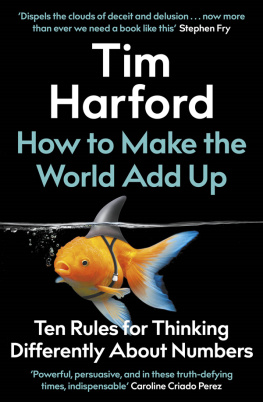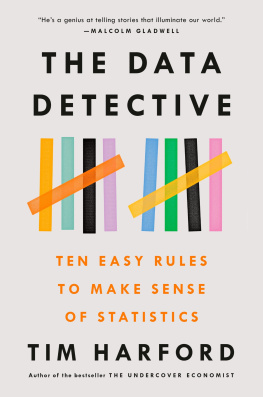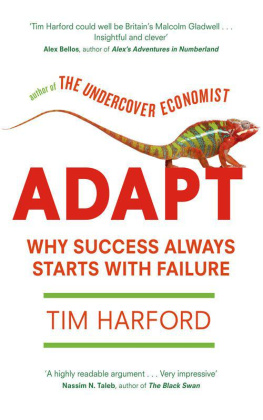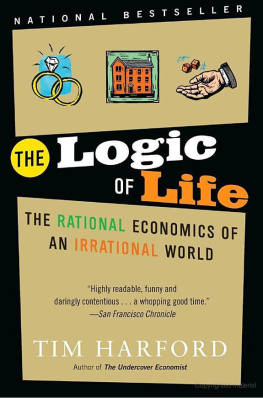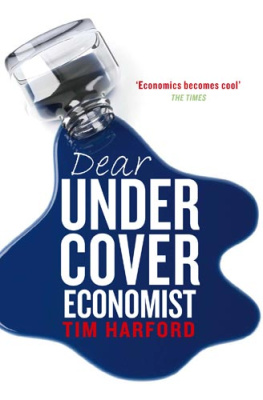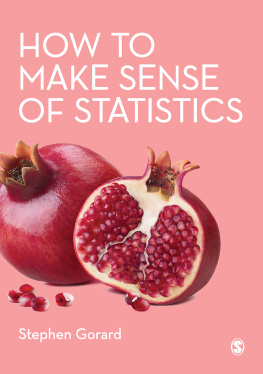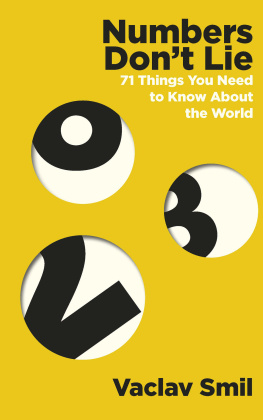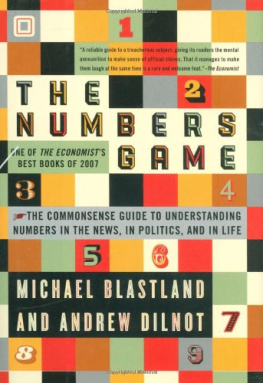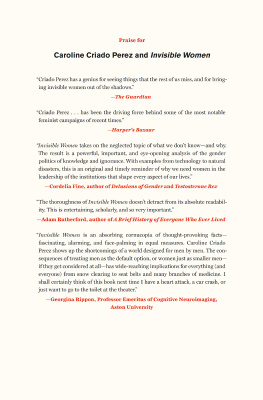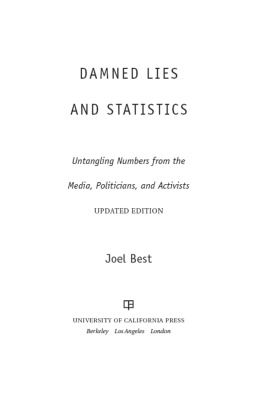Tim Harford - How to Make the World Add Up: Ten Rules for Thinking Differently About Numbers
Here you can read online Tim Harford - How to Make the World Add Up: Ten Rules for Thinking Differently About Numbers full text of the book (entire story) in english for free. Download pdf and epub, get meaning, cover and reviews about this ebook. year: 2020, publisher: The Bridge Street Press, genre: Art. Description of the work, (preface) as well as reviews are available. Best literature library LitArk.com created for fans of good reading and offers a wide selection of genres:
Romance novel
Science fiction
Adventure
Detective
Science
History
Home and family
Prose
Art
Politics
Computer
Non-fiction
Religion
Business
Children
Humor
Choose a favorite category and find really read worthwhile books. Enjoy immersion in the world of imagination, feel the emotions of the characters or learn something new for yourself, make an fascinating discovery.
- Book:How to Make the World Add Up: Ten Rules for Thinking Differently About Numbers
- Author:
- Publisher:The Bridge Street Press
- Genre:
- Year:2020
- Rating:4 / 5
- Favourites:Add to favourites
- Your mark:
How to Make the World Add Up: Ten Rules for Thinking Differently About Numbers: summary, description and annotation
We offer to read an annotation, description, summary or preface (depends on what the author of the book "How to Make the World Add Up: Ten Rules for Thinking Differently About Numbers" wrote himself). If you haven't found the necessary information about the book — write in the comments, we will try to find it.
If you arent in love with stats before reading this book, you will be by the time youre done. Powerful, persuasive, and in these truth-defying times, indispensable
Caroline Criado Perez, author of Invisible Women
Nobody makes the statistics of everyday life more fascinating and enjoyable than Tim Harford
Bill Bryson
Fabulously readable, lucid, witty and authoritative . . . Every politician and journalist should be made to read this book, but everyone else will get so much pleasure and draw so much strength from the joyful way it dispels the clouds of deceit and delusion
Stephen Fry
Wise, humane and, above all, illuminating. Nobody is better on statistics and numbers - and how to make sense of them
Matthew Syed
When was the last time you read a grand statement, accompanied by a large number, and wondered whether it could really be true? Statistics are vital in helping us tell stories - we see them in the papers, on social media, and we hear them used in everyday conversation - and yet we doubt them more than ever.
But numbers - in the right hands - have the power to change the world for the better. Contrary to popular belief, good statistics are not a trick, although they are a kind of magic. Good statistics are not smoke and mirrors; in fact, they help us see more clearly. Good statistics are like a telescope for an astronomer, a microscope for a bacteriologist, or an X-ray for a radiologist. If we are willing to let them, good statistics help us see things about the world around us and about ourselves - both large and small - that we would not be able to see in any other way.
In How to Make the World Add Up, Tim Harford draws on his experience as both an economist and presenter of the BBCs radio show More or Less. He takes us deep into the world of disinformation and obfuscation, bad research and misplaced motivation to find those priceless jewels of data and analysis that make communicating with numbers worthwhile. Harfords characters range from the art forger who conned the Nazis to the stripper who fell in love with the most powerful congressman in Washington, to famous data detectives such as John Maynard Keynes, Daniel Kahneman and Florence Nightingale. He reveals how we can evaluate the claims that surround us with confidence, curiosity and a healthy level of scepticism.
Using ten simple rules for understanding numbers - plus one golden rule - this extraordinarily insightful book shows how if we keep our wits about us, thinking carefully about the way numbers are sourced and presented, we can look around us and see with crystal clarity how the world adds up.
Tim Harford: author's other books
Who wrote How to Make the World Add Up: Ten Rules for Thinking Differently About Numbers? Find out the surname, the name of the author of the book and a list of all author's works by series.

